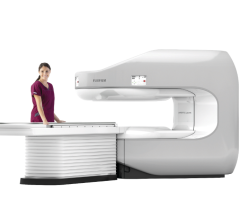
Image courtesy of Sectra
November 25, 2015 – At the 2015 Radiological Society of North America (RSNA) annual meeting in Chicago, Sectra will demonstrate how a common solution for integrated diagnostics improves collaboration between radiology and pathology, thereby increasing efficiency in cancer care. In addition, the solution saves money for healthcare by integrating several systems into a single system.
Pathology and radiology are key services, and images and reports from these two diagnostic services are central to effective cancer care. Both of these medical disciplines are extremely dependent on access to adequate clinical information to be able to provide correct responses and reports to the responsible physicians, surgeons and oncologists and to the patient.
To enable the care provider to give better, faster and more patient-centered care, Sectra offers systems and services for comprehensive handling and storage of all types of medical images – primarily for large image diagnostics services, such as radiology, breast imaging and pathology, but also for other departments where medical image material is used.
The digitization of pathology is an enabler and a prerequisite for increased collaboration across specialties. Sectra’s solution for digital pathology is built on the same platform as its radiology picture archiving and communication system (PACS), enabling bi-directional sharing of images and reports and creating transparency across cancer care pathways. This transparency allows for correlation of findings and provides a broader view of patient disease that helps physicians to reach more accurate diagnosis and treatment decisions. In addition, hospitals’ maintenance and operating costs are reduced by digitizing pathology on the same platform as radiology.
Sectra’s solutions for radiology and pathology both include functionality for preparation and presentation at multidisciplinary team meetings. The joint platform enables pathologists and radiologists to add images to the same list during the actual review work. The annotations and image settings established during the review are then applied automatically, streamlining the preparation workflow. During the presentation, radiologists and pathologists can use the same system to show images and annotations, and to administrate follow-up tasks.
Digital pathology for primary diagnosis has not yet been approved by the U.S. Food and Drug Administration (FDA). Therefore, the solution will be demonstrated as a work in progress for U.S. customers.
For more information: www.sectra.com


 February 03, 2025
February 03, 2025 








